If you’re like most gun enthusiasts, you enjoy cleaning your firearms as much as shooting them. In order to clean your guns properly, you need the right gun cleaning kit. But what’s in a gun cleaning kit? And how do you put together a DIY gun cleaning kit? In this blog post, we will answer these questions and more! We will also provide an 11 step guide to assembling your own DIY gun cleaning kit. So whether you’re just starting out or are looking for an upgrade, read on for all the info you need!
What’s in a Gun Cleaning Kit?
A gun cleaning kit typically includes the following items:
- wire (brass) brushes, nylon brushes
- mops
- jags
- pipe cleaners
- cleaning swabs
- cleaning patches
- scraper
- straight pick
- pin punch
- slotted tips
- obstruction removers
- cable or bore snake.
In addition to these basic components, you may also want to consider adding a gun solvent and gun oil to your kit. And finally, don’t forget the all-important gun cleaning rod!
Gun Cleaning Rod vs Snake
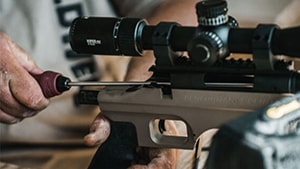
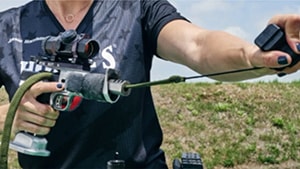
A gun cleaning snake, also known as a bore snake, is a long, flexible cable with a brush on one end and a patch holder on the other. It can be used to clean the barrel of a gun in seconds! Gun cleaning rods are rigid and require more time and effort to use.
Gun Cleaning Cable vs Rod
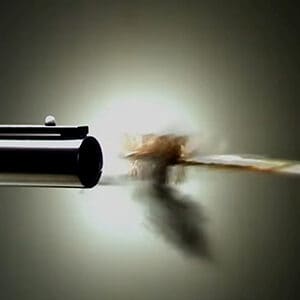
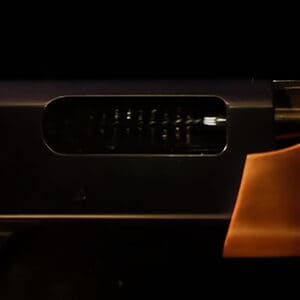
Cleaning cables are made of flexible metal and can be bent into any shape. They are ideal for tight spaces and corners. Gun cleaning rods are rigid and can only be bent in one direction. They are best suited for larger firearms. As you can see in the pictures above the cleaning rod will push the dirt and debris into the chamber of the gun. The cleaning cable, on the other hand, will pull the dirt and debris out of the barrel of the weapon.
Gun Cleaning Jag vs Loop
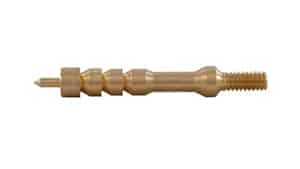
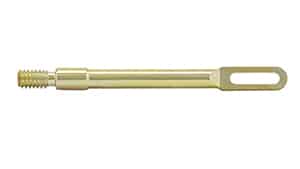
Jags are used to attach a patch or brush directly to the end of the barrel and push it through the barrel. They come in different sizes to fit different calibers of firearms. Loops, on the other hand, are used to clean the barrel by pulling a cleaning cable or snake through it.
Jags come in different sizes:
- .22 caliber jag
- .270 caliber jag
- .30 caliber jag
- .357/.38 caliber jag
- .40/.45 caliber jag
Loops come in different sizes:
- 12 gauge shotgun cleaning loop
- 16 gauge shotgun cleaning loop
- 20 gauge shotgun cleaning loop
- 28 gauge shotgun cleaning loop
Gun Cleaning Solvent vs Oil
Gun solvents are used to dissolve built-up gun powder and other deposits from the barrel of a gun. Gun oils, on the other hand, protect metal surfaces from corrosion and wear. Most gun kits include one or both of these items. Both solvents and oils come in different viscosities (thicknesses) depending on what works best for your gun. However, you may want to consider adding more solvent or oil depending on how often you clean your guns.
Round Gun Cleaning Patches vs Square Gun Cleaning Patches
Cotton patches tend to absorb more solvents and oils than synthetic patches. As a result, they are better suited for cleaning the barrel of a gun. Square gun cleaning patches are more absorbent than round patches and are therefore ideal for removing carbon build-up.
Nylon Brushes vs Brass Brushes
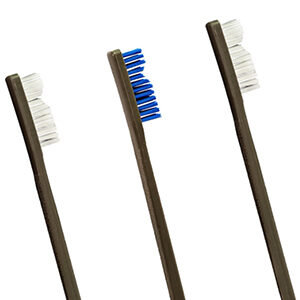
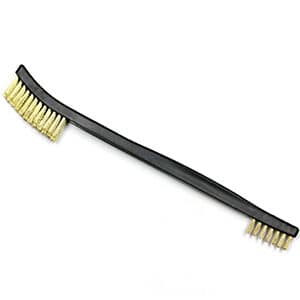
Nylon brushes are gentle on firearms and are ideal for removing carbon build-up. Brass brushes are more aggressive and can damage the finish of your firearm if not used properly. They should only be used when absolutely necessary.
How to Put Together a DIY Gun Cleaning Kit?
Now that you know what’s in a gun cleaning kit, it’s time to put together your own DIY kit! Here is an 11 step guide on how to do just that:
Step One: Choose the right tools. Before you can start assembling your kit, you need to decide what tools you will need. This depends on the type of firearms you own and the level of cleaning required. Basic components include wire (brass) brushes, nylon brushes, mops, jags, pipe cleaners, cleaning swabs, cleaning patches and a scraper.
Step Two: Choose the right solvent. Not all solvents are created equal. You need to choose one that is best suited for your firearms. In general, heavier solvents are better at dissolving gunpowder residue and carbon build-up.
Step Three: Choose the right oil. Just like with solvents, not all oils are created equal. You need to choose one that is best suited for your firearms. In general, lighter oils are better at protecting against corrosion and rust. Visit our web page for a listing of solvents and oils: Best Gun Cleaning Solvents – The Top 8 Gun Cleaners in 2021.
Step Four: Choose the right gun cleaning kit case or bag. This will help keep your tools organized and easy to access. You may want a small one for out in the field or on the range. You may also want a larger one for your at home cleaning.
Step Five: Assemble your gun cleaning kit. This can be done in a variety of ways, depending on what works best for you. Some people prefer to assemble their kits by caliber, while others organize their tools by type. There are many merchants that offer various tools for your kit. Visit Tipton as they have a good sampling of quality tools for your DIY gun cleaning kit.
Step Six: Label your gun cleaning kit. This will help you remember what each tool is for and prevent any confusion when using them.
Step Seven: Store your gun cleaning kit in a safe place. Make sure it is out of reach of children and pets.
Step Eight: Read the manufacturer’s instructions carefully before using your new gun cleaning kit. Each brand and model of firearm requires its own specific method of cleaning.
Step Nine: Clean your firearms regularly. The more often you clean them, the less build-up will occur.
Step Ten: Have fun! Gun cleaning can be a tedious task, but it’s also a necessary one. Take your time and enjoy getting to know your firearms inside and out.
Step Eleven: Repeat steps one through eleven as needed!
Now that you know what’s in a gun cleaning kit and how to put one together, be sure to stock up before your next shooting outing! If you don’t want to put together a DIY gun cleaning kit, then visit Best Universal Gun Cleaning Kits | Top 5 for All Guns in 2022.
Happy gun cleaning! 🙂
FAQs
What’s the best way to clean my gun?
Cleaning your gun depends on the type of firearm you own and the level of cleaning required. In general, follow these steps:
– Remove all ammunition from the firearm
– Disassemble the firearm as much as possible
– Use a wire brush to clean out the barrel of the gun
– Use a nylon brush to clean other parts of the gun
– Soak all parts in solvent for a few minutes
– Wipe down all parts with a cleaning cloth
– Lubricate all moving parts with oil
What’s the difference between a gun cleaning kit and a gun maintenance kit?
A gun cleaning kit is used to clean firearms after they have been fired. A gun maintenance kit is used to maintain firearms between cleanings. It includes items like polishing cloths, solvents and oils that help keep your firearm in good condition.
What’s the best way to store my gun cleaning kit?
Store your gun cleaning kit in a safe place out of reach of children and pets. Make sure all tools are properly labeled so there is no confusion when using them.
I don’t know how to disassemble my gun. Can you show me how?
Many people find instructional videos on YouTube or other online sources helpful for this task. Be sure to research the specific model of firearm you own before attempting to disassemble it. There are also many gun cleaning books available that can provide step-by-step instructions.
What is the best way to clean my AR-15?
The best way to clean an AR-15 depends on what type of ammunition you use. For black powder or lead bullets, a heavier solvent is recommended. For brass or copper jacketed rounds, a lighter oil should be used. Cleaning procedures may also vary depending on the manufacturer of your AR-15. Always consult the owner’s manual before attempting to clean your rifle.
I don’t have any firearms yet. Should I still buy a gun cleaning kit?
A gun cleaning kit is essential for anyone who owns firearms. Even if you don’t have a gun yet, it’s a good idea to purchase a kit so you’re prepared when you do. It’s also important to know how to use the kit properly so that your firearms are maintained and in optimal condition.
How often should I clean my gun?
How often you should clean your gun depends on how often it is used and what type of ammunition is fired. In general, it’s a good idea to clean your gun after every shooting session. For a more in-depth answer to this question, visit our web page How Often Should You Clean Your Gun.
Should I wear something to protect my hands?
Absolutely! You should protect yourself from the lead that is found in bullets and most cleaning solutions are toxic, too! If you don’t already have a box of 100 gloves for cleaning your guns, then check out page on the Top 4 Gun Cleaning Gloves.
If you have any questions, do not hesitate to leave a comment in the comment box.
